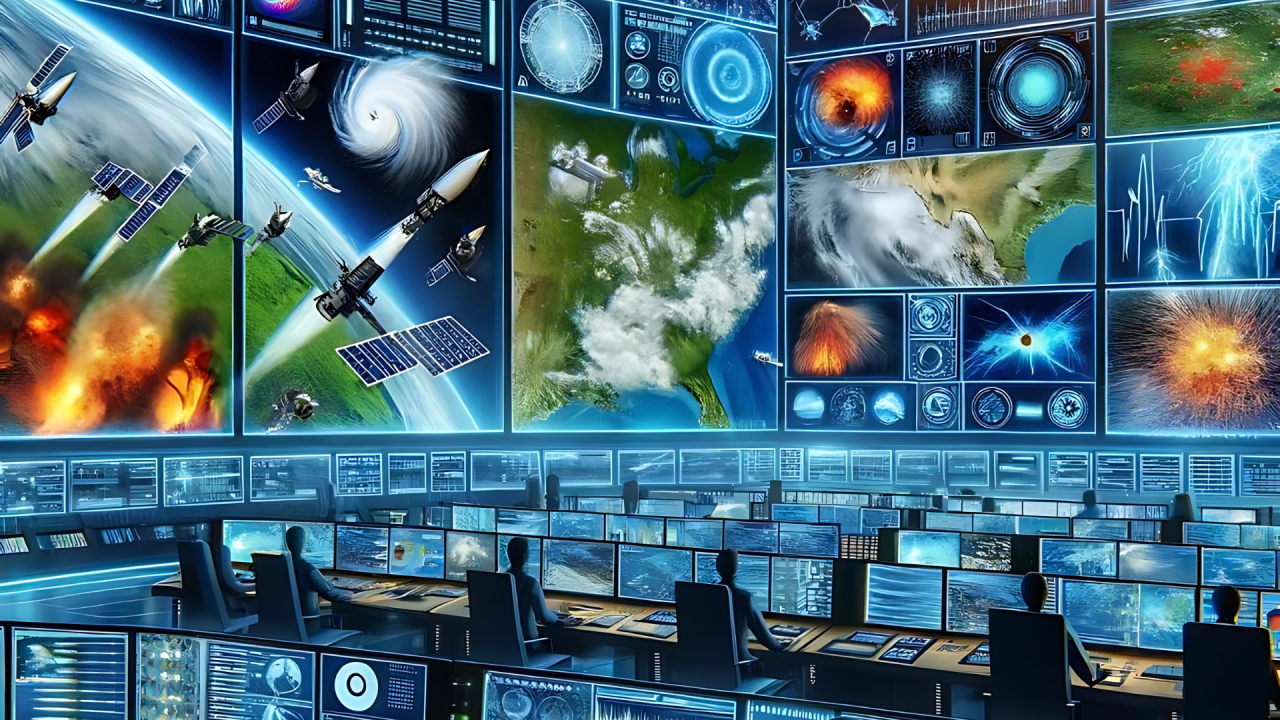Natural disasters include hurricanes, floods, wildfires, earthquakes, and tornadoes. All these are capable of bringing properties, businesses, and infrastructure to a pulp. The events are but destructive in immediate damage; long-term effects are observed in unbalanced economic, environmental, and social perspectives. Climate change has already begun and is continuing to increase the vulnerability towards these calamities, making it paramount that methods of prediction and potential damage mitigation are sought concerning natural disasters, especially with regard to property owners and investors.
In recent years, Artificial Intelligence has emerged as a powerful tool in predicting natural disaster risks, helping property owners, insurance companies, and government agencies prepare for and respond to these events more effectively. By leveraging vast amounts of data, machine learning models, and predictive analytics, AI is changing the landscape of disaster risk management. In this article, we will explore how AI is being used to predict natural disaster risks for properties and the various benefits it offers to property owners, insurers, and communities at large.
The Growing Importance of Disaster Risk Prediction
Properties are always at risk of destruction due to natural catastrophes, especially where a particular area is regarded as a disaster zone. In this respect, every house in a flood-prone area, earthquake area, or wildfire area is susceptible at any moment. The unpredictability of these disasters and their increased frequency and intensity, linked to climate change, put pressure on property owners to accurately gauge and reduce these hazards.
To the property owner, knowledge of the natural disaster risk is crucial in terms of making informed decisions concerning purchase, insurance, and/or maintenance of the property. Insurers need these exact predictions to understand financial risk in underwriting and price accordingly. Local governments and urban planners also use the results when deciding on zoning and infrastructure investments or disaster preparedness.
However, traditional methods of risk assessment, such as historical data analysis or reliance on generalized disaster models, can be limiting in terms of accuracy and timeliness. This is where AI steps in, offering new capabilities for more precise, real-time predictions and insights.
AI in Natural Disaster Risk Prediction
AI deploys machine learning algorithms, data analytics, and neural networks in identifying patterns from massive chunks of data for better risk predictions of natural disasters. These systems process and analyze data from a number of sources, including satellite imagery, weather data, geological surveys, and even social media feeds to forecast the likelihood of disasters and predict the potential impact on properties.
Following are some of the key ways in which AI is being used to predict natural disaster risks:
1. Flood Risk Prediction
Flooding is one of the most frequent and damaging natural disasters. It may be caused by heavy rainfall, snowmelt, or rise in sea levels. AI models can analyze real-time weather data, river flow rates, and topographic features to predict flood risks for specific properties.
For instance, AI can process data from weather stations and satellites to predict rainfall patterns and assess how they might lead to floods in certain areas. By integrating geographic data like elevation, proximity to rivers or coastlines, and drainage infrastructure, AI is able to estimate the probability of flooding at specific locations and determine the potential severity of the event.
Flood risk prediction models can also integrate historical flood data to identify patterns in flood occurrences, helping property owners assess the likelihood of future flooding. AI-powered flood mapping tools allow property owners and developers to visualize the flood risk for specific properties, providing crucial information when making decisions about building, buying, or selling real estate.
2. Wildfire Risk Prediction
Wildfires are becoming increasingly prevalent, especially in areas with dry climates and increased temperatures due to climate change. AI is playing an essential role in predicting wildfire risks by analyzing environmental factors such as vegetation type, humidity levels, temperature, wind patterns, and historical fire data.
Machine learning algorithms can analyze satellite imagery, drone data, and other sources of information to identify highly wildfire-vulnerable areas. These AI systems can predict how fast a fire might spread, in which direction it could move, and what properties might be affected based on weather conditions, fuel load, and topography.
AI-driven applications can check the possibility of wildfire threats for an estate by assessing factors related to proximity to forests, firebreaks, or fire-fighting infrastructure within a locality. The resulting insight enables estate owners to proactively clear bushy land cover or make use of fire-resistant building materials and help in minimizing fire damages within one’s premises after a possible breakout.
3. Earthquake Risk Assessment
Although earthquakes are not as predictable as other weather-related disasters, AI is serving to enhance the capability for assessing the risk of earthquakes on properties. AI models can analyze seismic data from all over the world, mapping fault lines, seismic activity, and patterns of ground movement to show the regions that have the highest likelihood of experiencing significant earthquakes.
Processing data on soil composition, building construction, and proximity to fault lines, AI can give far more precise risk assessments for individual properties. This enables property owners and insurers to assess the likelihood of structural damage and make informed decisions about strengthening buildings or buying earthquake insurance.
In addition, AI can help predict aftershocks and the probable damage to weakened structures. AI-driven early warning systems can provide much-needed time for residents and businesses to prepare for an earthquake that could save lives and decrease property damage.
4. Hurricane and Tornado Risk Prediction
Hurricanes and tornadoes are extremely destructive in nature, bringing about great loss of properties, especially in coastal and central regions. AI works in enhancing the accuracy of the forecast through the study of data from satellites, weather stations, and ocean buoys to track storm development and movement in real time.
AI models can process large volumes of weather data to predict hurricane strength and path, thus providing valuable lead time for evacuations and protection of property. Similarly, AI can analyze tornado patterns, weather conditions, and atmospheric instability to predict the likelihood of tornadoes forming and assess the potential impact on properties in a given area.
Blending this historical data with real-time weather inputs, AI can help property owners understand the risk posed by these violent storms and, pre-emptively, to reinforce buildings, install storm shutters, or buy comprehensive insurance cover.
Benefits of Using AI for Disaster Risk Prediction
1. Improved Accuracy and Timeliness: AI’s ability to analyze large amounts of real-time data allows for more accurate and timely predictions compared to traditional methods. This enables property owners and insurers to make faster, better-informed decisions about risk mitigation and disaster preparedness.
2. Cost Savings: Property owners and developers alike could avoid the costly errors of building in high-hazard locations or underestimating damages by making proper assessments of disaster risks. Insurers would be in a much better position to price policies to reflect specific risks of individual properties, reducing potential losses to the companies.
3. Proactive Risk Management: With AI-powered predictions, property owners can take proactive steps to mitigate potential risks. Whether it’s investing in flood barriers, reinforcing buildings against earthquakes, or creating firebreaks to protect against wildfires, AI enables more effective risk management strategies.
4. Improved Disaster Response: The capabilities of AI in the forecast and monitoring of natural disasters are bound to give emergency operators a prior preparedness, efficient use of their resources, and response times. This could mean the difference between life and death or property damage in an event of a disaster.
5. Long-Term Planning: For property investors, developers, and urban planners, AI offers valuable insights into long-term disaster risks, enabling them to make decisions that put a premium on resiliency and sustainability. The early identification of high-risk areas by AI can steer development away from vulnerable regions and encourage more resilient building practices.
Challenges and Considerations
While AI holds great promise in predicting natural disaster risks for properties, there are a number of challenges. The first challenge is data quality. AI models require large volumes of data, and the quality of the predictions depends on the quality and completeness of the data used. Partial, outdated, or biased data can lead to incorrect risk assessments.
AI models are a continuous process that must take in new information to adapt to changing conditions such as climate change, urbanization, and shifting environmental factors. Hence, AI systems will need collaboration of data scientists, government agencies, property owners, and insurers so they remain accurate and relevant in service.
Conclusion: A Safer, More Informed Future
AI is the future in how we are going to predict and manage the risk of natural disasters to properties. By harnessing machine learning, data analytics, and predictive models, property owners, insurers, and government agencies can gain a better understanding of the risks they face and take proactive steps to protect people and property.
With accelerating climate change, AI will play an increasingly crucial role in disaster risk management. By providing accurate, timely, and actionable insights, AI is helping property owners make more informed decisions, reduce potential damage, and build more resilient communities for the future.










